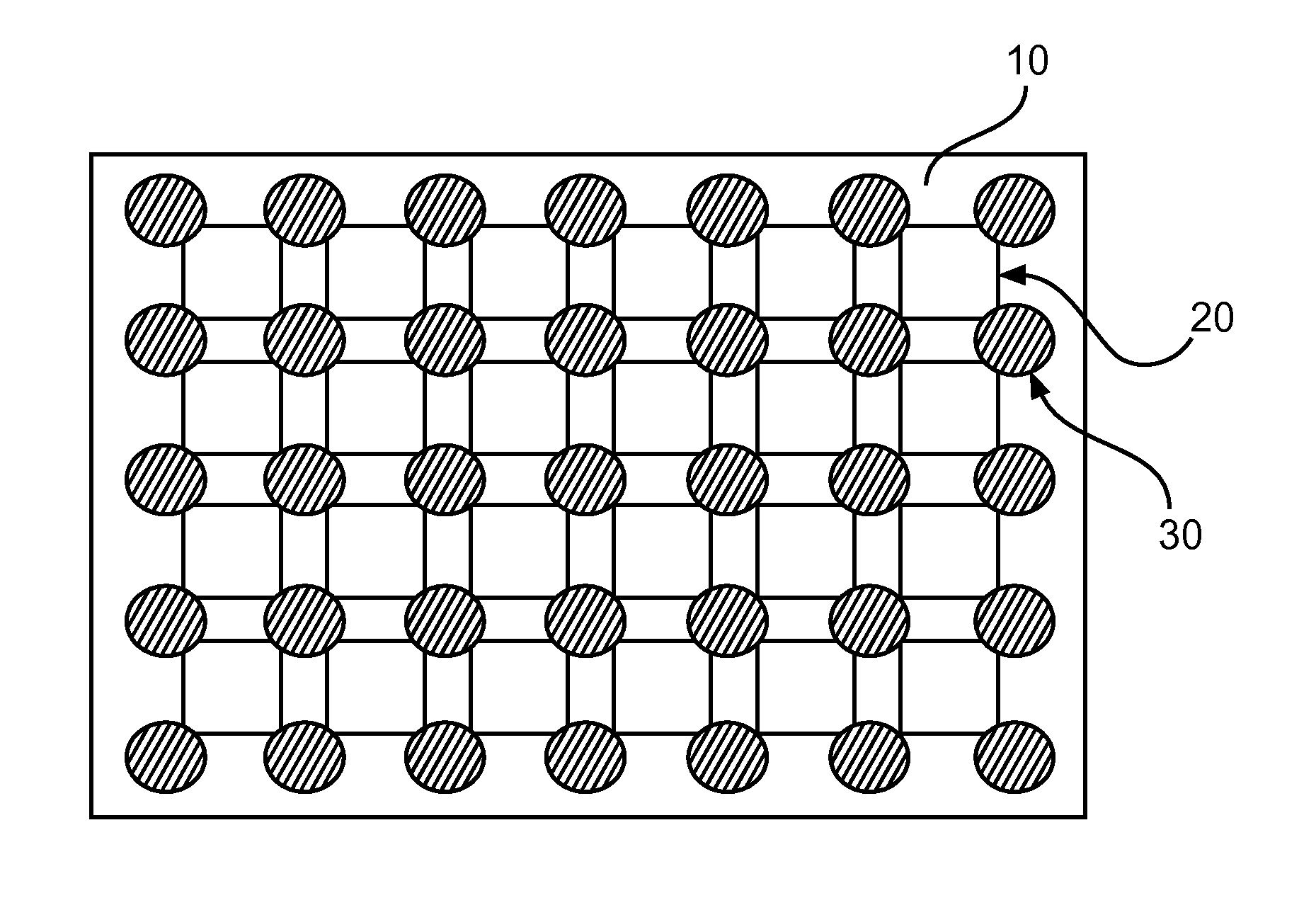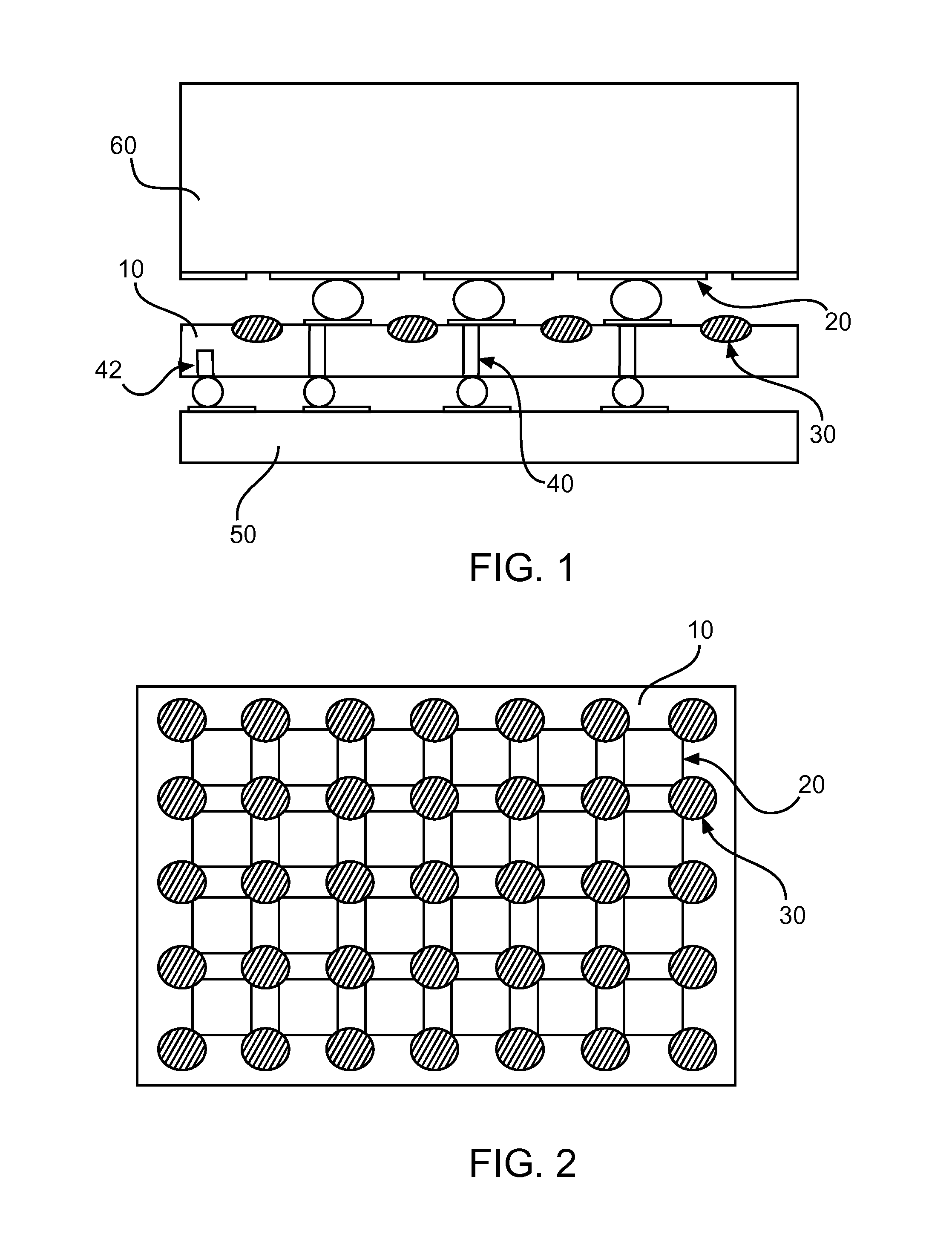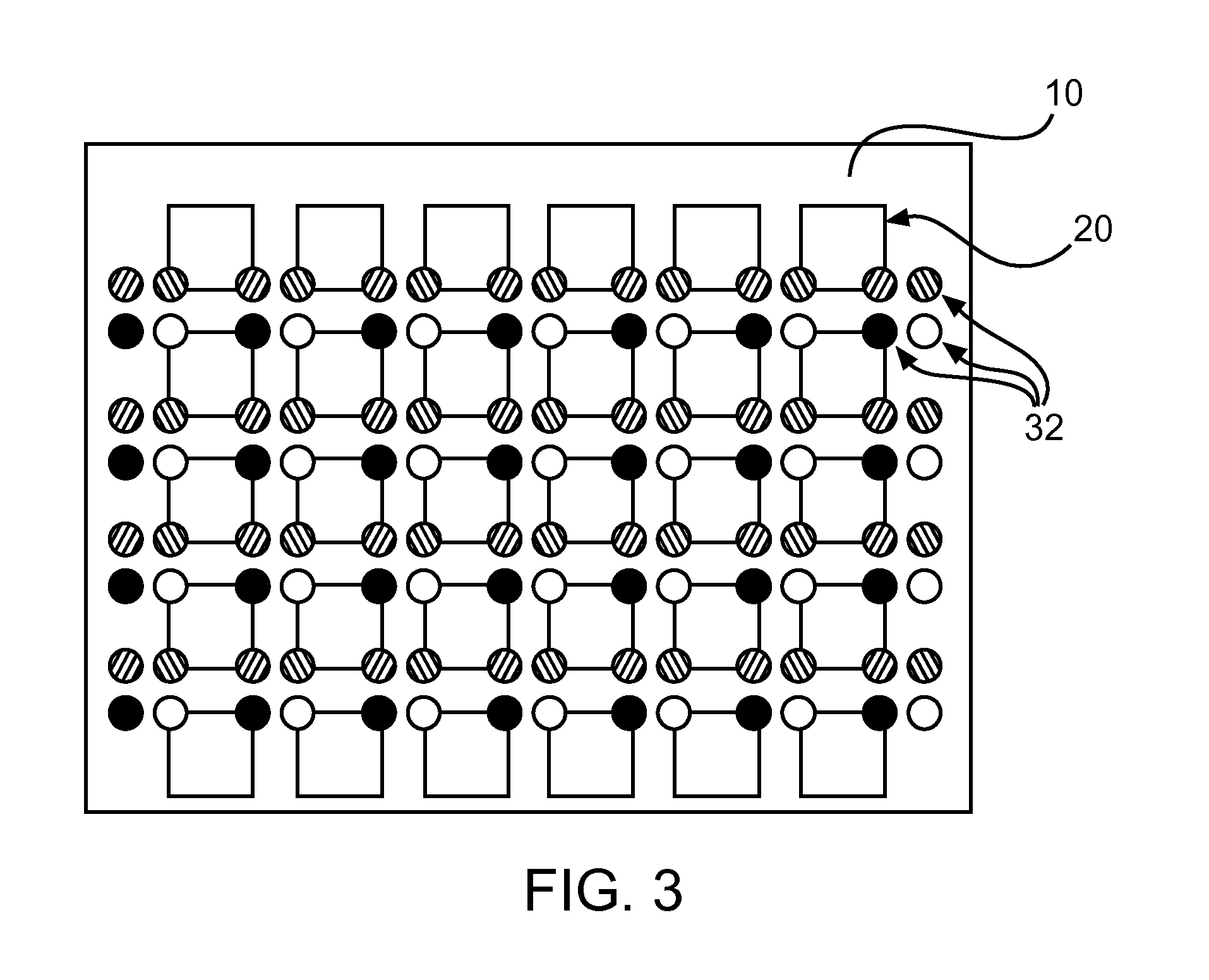Sub-band infra-red irradiation for detector crystals
a detector crystal and sub-band technology, applied in the field of radiation detectors, can solve the problems of insufficient or even no charge collection, and insufficient radiation detection speed, and achieve the effect of less polarization and more efficient radiation detection
- Summary
- Abstract
- Description
- Claims
- Application Information
AI Technical Summary
Benefits of technology
Problems solved by technology
Method used
Image
Examples
first embodiment
[0028]FIG. 1 shows schematically and exemplarily a cross-sectional side view of a radiation detector with an IR LED layer 10 interposed between a 4-side-buttable CMOS (Complementary Metal Oxide Semiconductor) readout circuit or chip 50, e.g. and application specific integrated circuit (ASIC), and a CZT crystal 60. The CZT crystal 60 is flip-chip bonded via pixel pads 20 to a substrate (i.e. IR LED layer 10 and readout chip 50) which does the readout. More specifically, an IR irradiation device (i.e. the IR LED layer 10) is integrated into the readout chip 50 to which the CZT crystal 60 is flip-chip bonded, so that a 4-side-buttable crystal is achieved, in which electrical input / output circuits are arranged under the device rather than at its edge. This 3-D packaging allows extremely close spacing of radiation detectors.
[0029]Irradiation with sub-band IR LED light, where the optical photons have an energy which is smaller than the band gap, reduces the tendency towards polarization ...
second embodiment
[0030]Hence, as indicated in FIG. 1, the pixels of the readout electronics of the readout chip 50 are bonded via respective solder bumps and through connection portions 40 directly to the pixel pads 20 of the CZT crystal 60. Additionally, a supply contact 42 for the IR LED layer 10 is provided. The substrate with the readout circuit also implements—besides the readout electronics—one or more sub-band IR LED sources 30. Optionally, as described below in connection with the second embodiment, more than one IR LED source 30 per pixel may be implemented, if different IR light wavelengths are to be used, which may help to release even more charges of deep traps of different energies.
[0031]Alternatively, it may suffice to implement the IR LED sources 30 only in a sub-set of pixels. Since the IR LED sources 30 may be manufactured from GaAs or AlGaAs material which differs from CMOS, the IR LED sources 30 can be implemented on a different substrate (i.e. the IR LED layer 10), which is then ...
PUM
 Login to View More
Login to View More Abstract
Description
Claims
Application Information
 Login to View More
Login to View More - R&D
- Intellectual Property
- Life Sciences
- Materials
- Tech Scout
- Unparalleled Data Quality
- Higher Quality Content
- 60% Fewer Hallucinations
Browse by: Latest US Patents, China's latest patents, Technical Efficacy Thesaurus, Application Domain, Technology Topic, Popular Technical Reports.
© 2025 PatSnap. All rights reserved.Legal|Privacy policy|Modern Slavery Act Transparency Statement|Sitemap|About US| Contact US: help@patsnap.com



